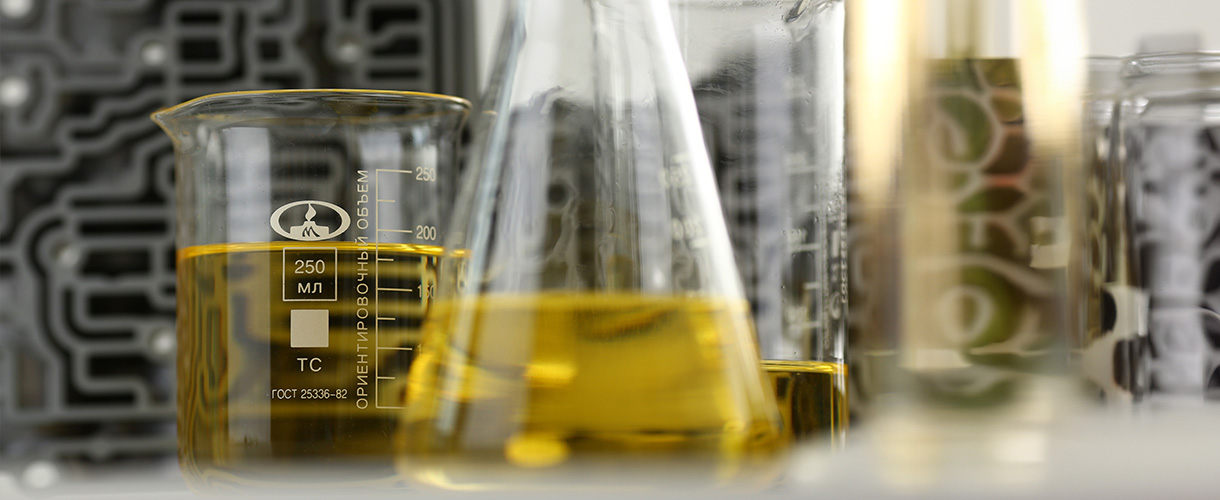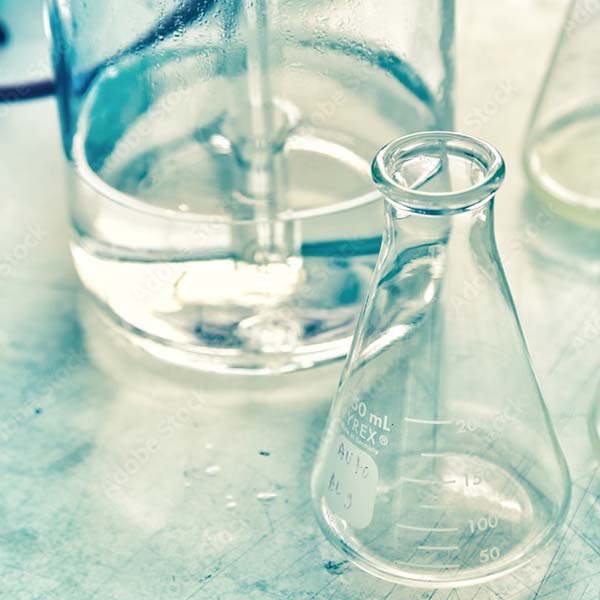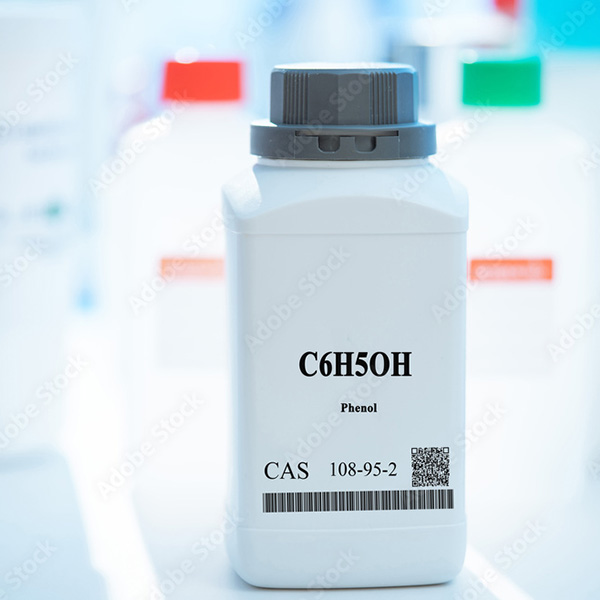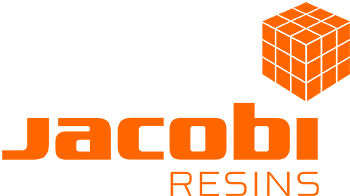
APPLICATIONS & SOLUTIONS
Chemicals and Petrochemicals
The growth and increasing economic power of the middle class globally will drive demand for more advanced and smarter products from the chemical industry. At the same time, the industry is trying to decouple growing demand from increased hydrocarbon consumption. Manufacturers are investing heavily to create value using renewable resources, with leading companies setting ambitious targets to achieve net-zero greenhouse gas emissions by 2050. Consumers and shareholders alike value better carbon efficiency and reduced emissions.
From enabling cost-efficient synthesis and purification of large-scale chemicals, to helping manufacturers minimize their water footprint, Jacobi is a partner to the chemicals and petrochemicals industry. Our customers rely on our extensive product line and our technical experts to help them maintain reliable, energy- and cost-effective manufacturing of existing and new products, while minimizing water and waste impact.
- Heterogenous catalysts
- Brines purification
- Acid and caustic mineral solutions purification
- Fertilizers synthesis
- Non-aqueous solutions treatment
- Wastewater purification

Biodiesel purification
Biodiesel is produced by the trans-esterification of natural triglycerides with methanol
Glycerin is a by-product of the trans-esterification which has to be removed before biodiesel use. Biodiesel purification can be achieved using a dry Strong Acid Cation in the H+ form. The resin can be washed with methanol when its adsorption capacity is reached.
Product: Resinex DK-8

Solvent purification
Methanol purification
Metal impurities such as iron and manganese in crud methanol form an unwanted precipitate during neutralization and distillation to recover purified methanol. Precipitation can be prevented by treating crud methanol with a Strong Acid Cation in H+ which removes Mn2+ and Fe3+ before neutralization and distillation. The resin is regenerated with sulfuric acid
Product: KP H series
Resinex KP H can be also employed to remove amine impurities form methanol. In that case, as the amines concentrations are low, depending on the size of the system, the resin can be for one-way-use.

Phenol purification
In the cumene reaction for phenol production, the 2 products phenol and acetone are recovered by distillation. Before distillation, it is necessary to remove acidity. Phenol deacidification can be achieved using a Weak Base Anion resin such as Resinex CAT-23. The resin is conditioned with methanol at start-up and for the regeneration with caustic soda (sweetening-on, sweetening off).
After distillation, remaining impurities of same molecular weight as phenol (e.g. methylstyrene, acetophenone…) can be removed by condensation with phenol which produces easily separable high boiling products. A Strong Acid Cation resin in H+ form as Resinex CAT-9 can be used as catalyst for this condensation reaction.

Catalysis
The use of ion exchange resins as catalysts is well established and has increased the sustainability of making a host of well-known products. Ion exchange catalysts are a green chemistry solution because they can be reused many times, enable minimal energy consumption, and reduce the handling of hazardous materials.
Jacobi’s portfolio of heterogeneous catalysts are designed to provide excellent diffusional access, selectivity, and mechanical stability for each major reaction type, ensuring maximum yield and throughput in the process. Our products are engineered to withstand many cycles of industrial use, leading to a cost-effective solution.
We offer specialised catalysts for the following processes:
- Base catalysis
- Synthesis of bisphenol-A used in polycarbonates and epoxy resins
- Synthesis of 1,4-Butanediol for polymers and solvents
- Etherification to make fuel additives such as MTBE, ETBE, and TAME
- MIBK synthesis for rubber, coatings, adhesives
- MEK synthesis
- Phenol alkylation to produce detergents for lubricants
- Butylene hydration to produce tert-butyl alcohol (TBA)
- Isobutyle dimerization to produce isooctane

Chemicals Processing
The breadth and versatility of IEX is nowhere more evident than in key synthesis and purification applications in the chemical industry. Jacobi offers a full line of catalysts, IEX resins, and adsorbents that manufacturers use to meet stringent product requirements and environmental regulations, including the following applications:
- Biodiesel purification
- Chlor-alkali electrolysis (brine softening)
- Catalyst recovery
- Deacidification
- Heavy metals removal and precious metals recovery
- Hydrogen peroxide purification
- Phenol purification
- Solvent purification
CHEMICALS AND PETROCHEMICALS: PROCESSES
Condensate softening
Removal of total hardness from condensate streams.

Condensate treatment
Treatment of condensate.



Mixed bed (Polishing)
Demineralization treatment with a mixed bed resins (SAC + SBA) to remove residual ions salts and minerals after a demineralization system.


Brine softening
Removal of high concentration of calcium and magnesium as well as other earthalkali metals (e.g barium, strontium,..) in brine solution used in chloro-alkali processes for chlorine production.

Demineralisation of industrial water
Removal of all ions from a water stream (salts and minerals) to lower conductivity.






Catalysis
The use of ion exchange resins as catalysts is well established and has increased the sustainability of making a host of well-known products. Ion exchange catalysts are a green chemistry solution because they can be reused many times, enable minimal energy consumption, and reduce the handling of hazardous materials.


Waste water treatment
Treatment of waste water.


Acid Retardation
Removal of salts impurities from concentrated acid solutions implemented, for example, to recover acid liquors, like sulfuric acid from steel pickling baths, and purification of mixed/hydrofluoric acid used for stainless steel pickling.

Softening
Removal of total hardness (calcium and magnesium) from liquids.


CHEMICALS AND PETROCHEMICALS: PRODUCTS

Strong Acidic Cation
Strong acidic cation resins are bead sized co-polymers (mainly polystyrene-divinylbenzene) with a sulfuric group which attracts cations. Resinex SAC comes in gel or macroporous types and are available in several bead sizes to adapt to different applications.

Strong Based Anion
Strong base anion resins are bead sized co-polymers (mainly polystyrene-divinylbenzene) with a tertiary or quaternary ammonium group which removes anions in various processes. Resinex SBA comes in gel or macroporous type and is available in different bead sizes.

These are non-functionalized inert media made from Polypropylene or Polyethylene to protect tank nozzles or act as layers in packed beds and mechanical filters.

Catalyst Resins
Non-functionalized inert media made from Polypropylene or Polyethylene.

Mixed Bed Resins
Mixed bed resins are composed of strong cationic and anionic ion exchangers based on a polystyrene-divinylbenzene matrix that are usually sold in the ready to use (active) ionic forms.

W A C
WAC are polyacrylic, gel or macro ion exchange beads. They have the unique carboxylic acid functions.

Weak Based Anion
Weak base anion resins are bead sized co-polymers (mainly polystyrene-divinylbenzene) with tertiary ammonium groups, which are usually macroporous in structure.

Chelating Resins
Specialist resins for ion exchange processes where there is a high presence of competing ions.
GET IN TOUCH
Fill out the short form below and our team will be in touch.
*Indicates a mandatory field.
